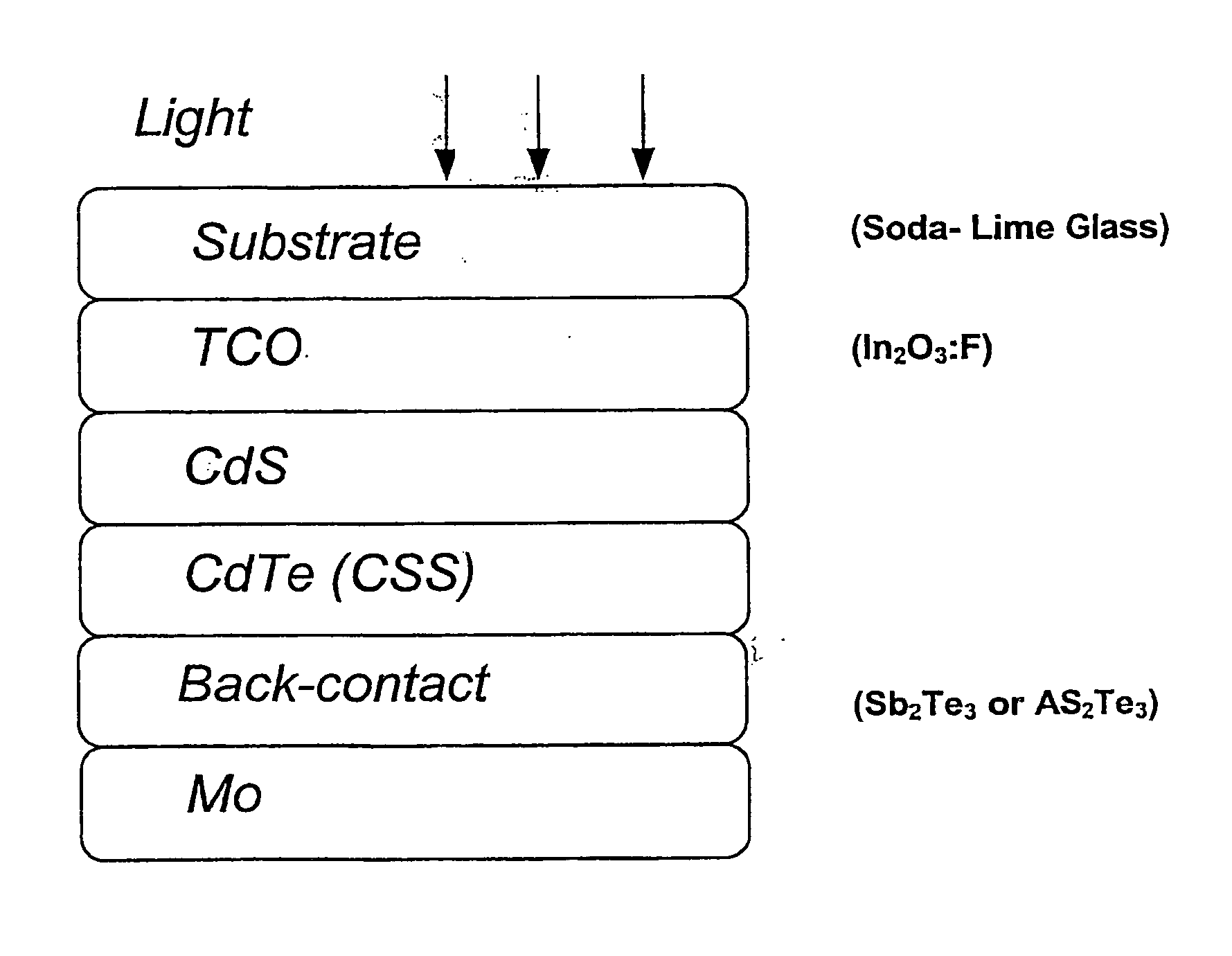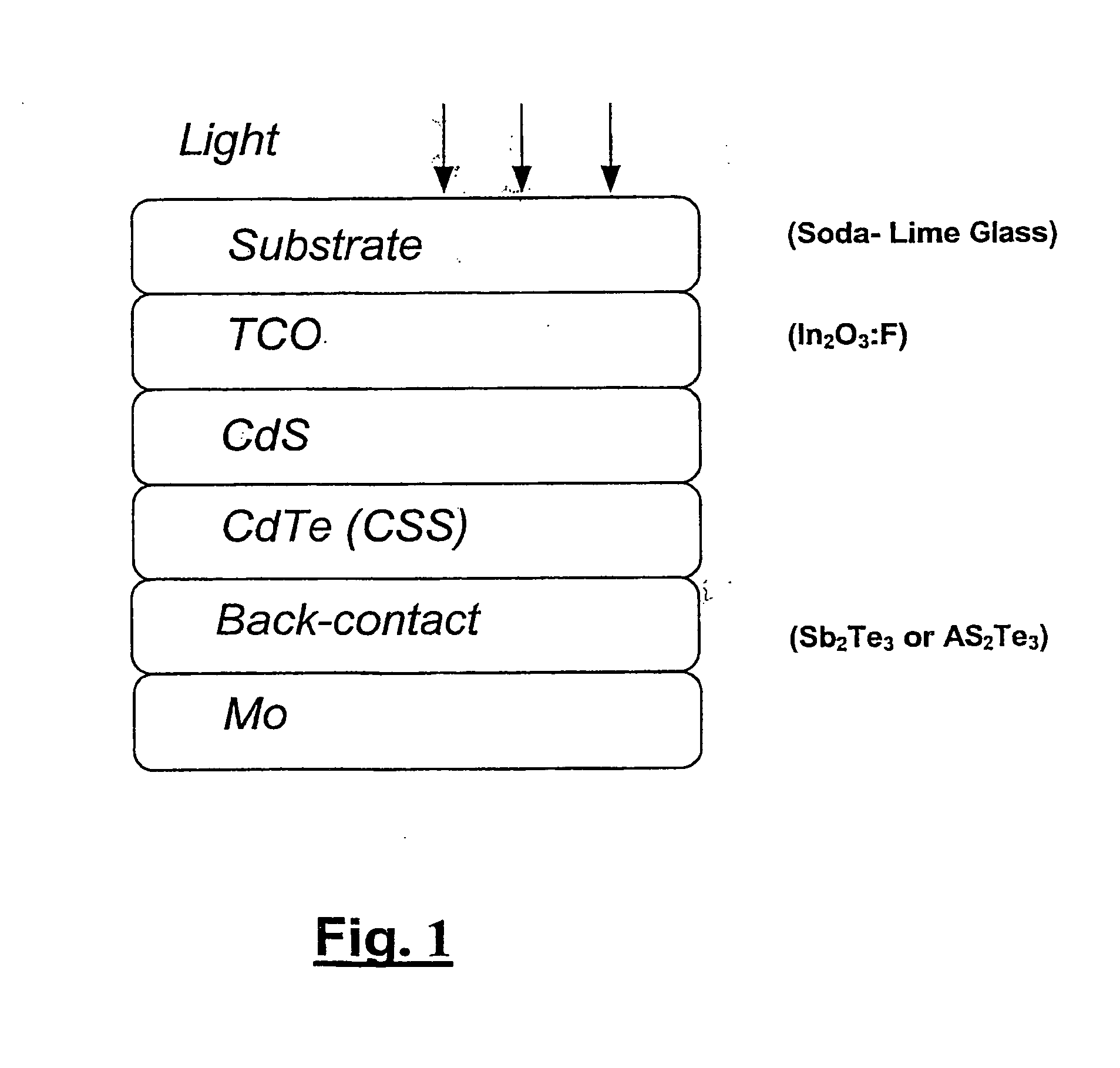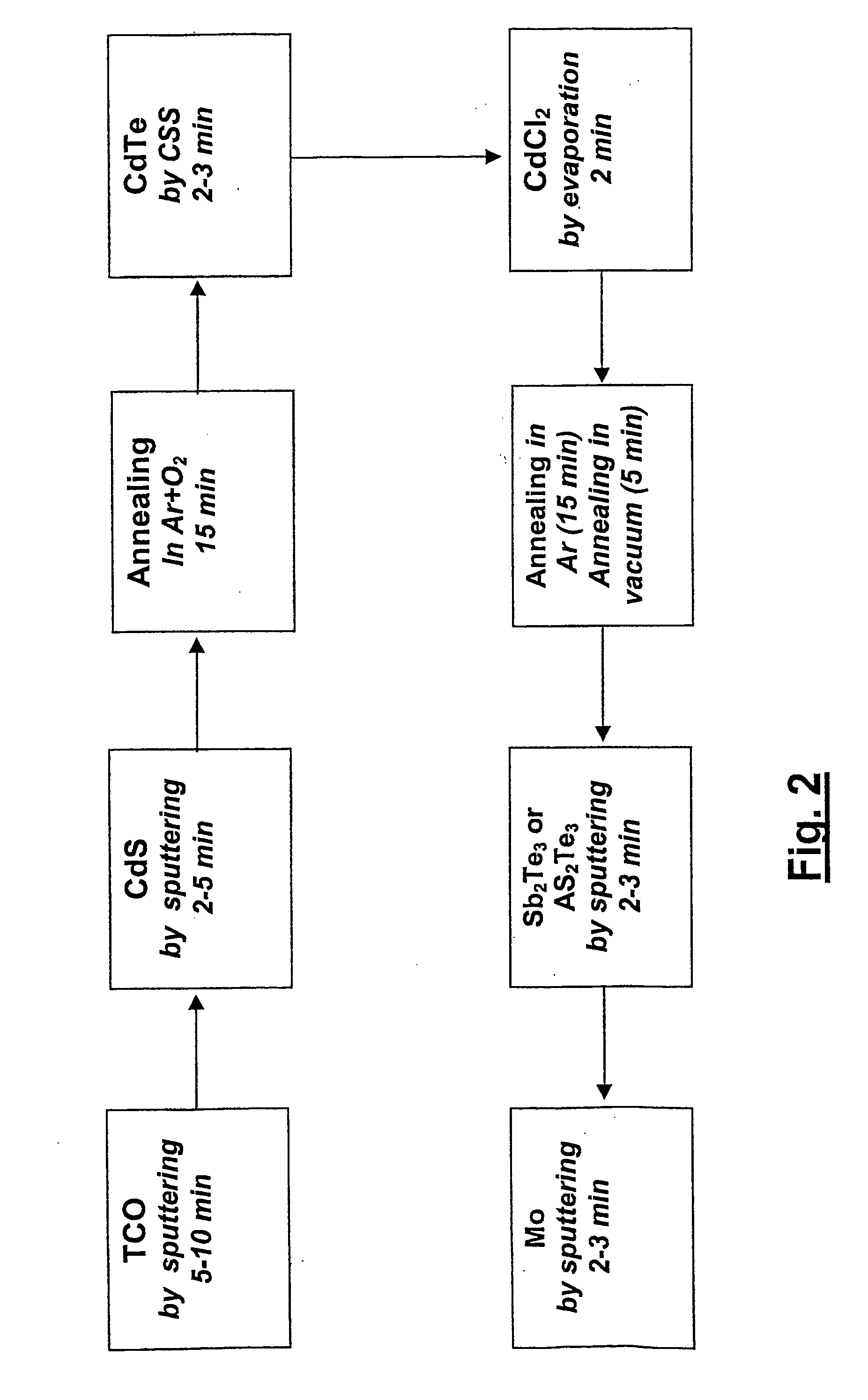Process for large-scale production of cdte/cds thin film solar cells
a technology of cdte/cds and solar cells, which is applied in the direction of photovoltaic energy generation, ion implantation coatings, coatings, etc., can solve the problems of affecting the achievement, affecting the stability of the target, and damage to the film, and achieve stable and efficient cdte/cds, large-scale production, and low cost
- Summary
- Abstract
- Description
- Claims
- Application Information
AI Technical Summary
Benefits of technology
Problems solved by technology
Method used
Image
Examples
example
[0038] A cell exhibiting a 14% efficiency has been prepared in the following way: a soda-lime glass has been covered by 500 nm of In.sub.2O.sub.3:F (fluorine-doped) deposited at 500.degree. C. substrate temperature as described above. 100 nm of CdS have been deposited by sputtering at 300.degree. C. substrate temperature and annealed for 15 min at 500.degree. C. in 500 mbar of Ar containing 20% of O.sub.2. 8 .mu.m of CdTe have been deposited on top of CdS by CSS at a substrate temperature of 500.degree. C. Both CdS and CdTe films are produced from a compact block source as described above. A treatment with 150 nm of CdCl.sub.2 has been done in an Ar atmosphere as described above. Finally a back contact has been created, without any etching, by depositing in sequence by sputtering 150 nm of Sb.sub.2Te.sub.3 and 150 nm of Mo.
[0039] After one hour under 10 suns at a temperature of 180.degree. C. in open-circuit conditions the solar cell prepared in this way exhibited the following para...
PUM
| Property | Measurement | Unit |
|---|---|---|
| pressure | aaaaa | aaaaa |
| pressure | aaaaa | aaaaa |
| temperature | aaaaa | aaaaa |
Abstract
Description
Claims
Application Information
 Login to View More
Login to View More - R&D
- Intellectual Property
- Life Sciences
- Materials
- Tech Scout
- Unparalleled Data Quality
- Higher Quality Content
- 60% Fewer Hallucinations
Browse by: Latest US Patents, China's latest patents, Technical Efficacy Thesaurus, Application Domain, Technology Topic, Popular Technical Reports.
© 2025 PatSnap. All rights reserved.Legal|Privacy policy|Modern Slavery Act Transparency Statement|Sitemap|About US| Contact US: help@patsnap.com



